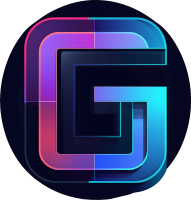

Mark this moment. What you are about to Discover is the very first, 100% decentralized Operating System, implemented by Wizards through continuous LIVE development since 2017 — with hundreds of terabytes of programming sessions now maintained by Google.
GRIDNET OS is the world's first 100% decentralized operating system designed with the end-user in mind. It aims to allow for a user experience resembling that known from DOS, LINUX, Windows, and Mac OS X centralized operating systems, while being completely decentralized.
GRIDNET OS boasts a Graphical User Interface that is 100% decentralized. The Bootloader fetches assets from multiple peers while verifying their integrity, ensuring a secure and distributed experience.
The first successful implementation of Decentralized Processing Threads (DPTs), allowing UI dApps to spawn threads executing GridScript byte-code with crypto-incentivized instruction execution.
Most commands are compatible with Unix/Linux and to some extent with DOS. The system includes a decentralized file system supporting Access Control Lists (ACLs) through SETFACL and GETFACL commands.
GRIDNET OS enables developers to create windowed UI dApps with standard JavaScript. Design advanced graphical interfaces, define custom windows, and deploy them as part of the fully decentralized environment—no specialized frameworks needed.
Tap into every sub‑system of GRIDNET OS using the event‑driven, asynchronous ECMA6 JavaScript API. Your dApps can respond instantly to real‑time network events, blockchain state changes, and user interactions—delivering a truly dynamic experience.
GRIDNET OS introduces GridScript (for direct CLI or script files) and its object‑oriented extension GridScript++. These languages can simultaneously output to the Terminal, mutate the Decentralized State Machine, or generate BER‑encoded metadata that traverses onion‑routed connections to UI dApps—a groundbreaking multi‑domal design.
Thanks to off‑chain micropayments, GRIDNET OS lets you spawn remote threads on other nodes—running in real‑time—and incentivize them via continuous fast transactions. This paves the way for decentralized “paid by the millisecond” cloud computing services.
GRIDNET OS introduces the first decentralized file system that supports read/write provisioning. Grant, revoke, or modify file access in real time, all tracked on a tamper‑resistant state machine—no centralized file server required.
From built‑in voting mechanisms to real‑time opinion polls, GRIDNET OS comes ready for the next‑gen social media era. Easily integrate decentralized voting logic into your dApps using dedicated APIs, enabling global governance and community feedback at scale.
First to implement a data-exchange protocol provably Sybil-proof in any kind of computer networks. All communications are end-to-end encrypted with custom ECC encryption and onion routing.
The computer-vision enabled mobile app (GRIDNET Token) plays a crucial role in the architecture. Whenever authentication is needed, simply scan a QR code displayed on screen.
Implemented by Wizards🧙🧙♀️ with hundreds of terabytes of LIVE programming sessions going on almost each and every day since 2017, maintained with hourly commentary on Discord.
Interact with GRIDNET OS through its powerful terminal interface, compatible with Unix/Linux commands. The decentralized shell allows you to perform operations across the network with intuitive commands.
GRIDNET OS is built on a foundation of peer-reviewed research that has made significant contributions to the fields of decentralized systems, networking, and security. These papers showcase the theoretical innovations that underpin the practical implementation of the world's first decentralized operating system.
There are multiple ways to access and interact with the GRIDNET decentralized operating system. Choose the method that works best for you.
Access the GRIDNET OS decentralized UI through any modern web browser. The interface will load assets from multiple nodes across the network.
Connect to any GRIDNET node using SSH to access the decentralized shell. Commands are compatible with Unix/Linux systems.
Connect directly to GRIDNET nodes via their IP addresses, bypassing the DNS system. Retrieve node addresses through the Torrent protocol.
Download the GRIDNET Token mobile app for authentication and secure interactions with the GRIDNET OS. The app uses computer vision technology to scan QR codes for secure authentication.
Install the GRIDNET Token app on your mobile device for secure authentication and wallet management.
Download and deploy your own GRIDNET node to contribute to the decentralized network.
Access the decentralized terminal services and start exploring the GRIDNET OS ecosystem.
Connect with other users, developers, and Wizards🧙🧙♀️ across various platforms. Get support, follow development, and contribute to the future of decentralized computing.